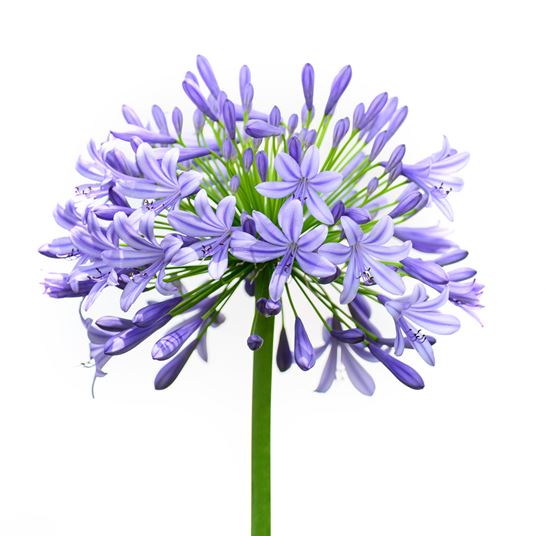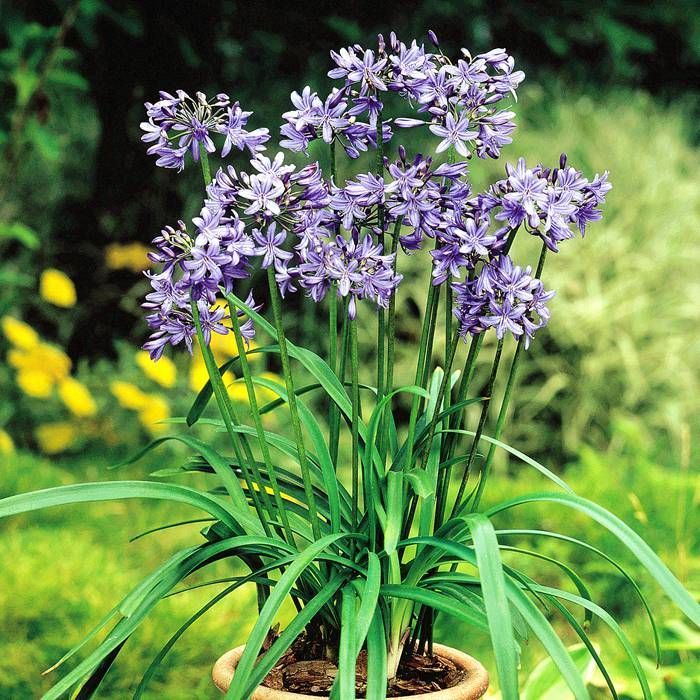Agapanthus Friend Plant Kingdoms: Perfect Pairings for Your Garden
Agapanthus Friend Plant Kingdoms: Perfect Pairings for Your Garden
Blog Article
Grasping the Art of Agapanthus Treatment: Crucial Steps for Healthy And Balanced Development and Lively Blooms
In the realm of gardening, the farming of agapanthus stands as a gratifying venture for those who seek to support these elegant blooming plants. With their striking flowers and graceful vegetation, agapanthus has actually caught the interest of gardeners worldwide. Nonetheless, accomplishing ideal development and vibrant blooms calls for a nuanced method that includes various essential steps. From picking the ideal range to grasping trimming methods, the trip towards growing thriving agapanthus plants is multifaceted and holds the essential to opening the complete capacity of these organic gems.

Picking the Right Agapanthus Range

When selecting the ideal Agapanthus selection for your yard, think about variables such as environment suitability, flower color, and growth behavior. Agapanthus, typically understood as Lily of the Nile or African lily, can be found in a selection of shades varying from shades of blue and purple to white. Select a bloom shade that complements your existing garden scheme to produce an unified landscape. Additionally, take into consideration the climate in your area to make sure the Agapanthus selection you pick can flourish in your certain problems. Some varieties are more forgiving of cool temperatures, while others like warmer environments. Understanding the development routine of different Agapanthus selections is important for correct placement within your yard. Some selections have a clumping development routine, ideal for boundaries or containers, while others have a more dispersing nature, ideal for ground cover or mass plantings. By meticulously evaluating these variables, you can pick the best Agapanthus range to improve the elegance of your yard.
Perfect Growing Conditions
Considering the ideal environmental needs is necessary for successful Agapanthus farming. Agapanthus flourishes in well-draining dirt with a slightly acidic to neutral pH degree. When planting, pick an area that gets complete sunlight to partial color. In hotter environments, supplying some afternoon shade can protect against scorching of the fallen leaves. Agapanthus plants are delicate to chilly temperatures and ought to be secured from frost throughout winter months.
To guarantee healthy and balanced development and vibrant blooms, plant Agapanthus light bulbs at a depth of regarding 2-4 inches and space them 8-12 inches apart. Including organic issue, such as garden compost, to the soil can improve drain and fertility, advertising durable root development. Mulching around the base of the plants aids maintain dampness and suppresses weed growth. Routine watering is essential, specifically throughout the expanding season, to maintain the dirt regularly wet yet not soaked.
Watering and Feeding Tips
Preserving appropriate moisture levels and providing vital nutrients are crucial elements in the treatment program for Agapanthus plants. When it involves sprinkling Agapanthus, it is essential to strike a balance. These plants prefer constantly damp soil but are prone to root rot if overwatered. During the expanding period, water deeply once a week, making sure the soil is well-draining to avoid waterlogging. In hotter environments or throughout periods of drought, even more regular watering may be necessary to maintain the soil uniformly wet. Nonetheless, reduce watering in the wintertime to stop waterlogged problems.
Fertilizing Agapanthus is important for promoting healthy growth and prolific flowers. Use a balanced fertilizer, such as a 10-10-10 formula, in the early spring as new development arises. Repeat this application every 6-8 weeks throughout the expanding period. Avoid excessive fertilization, as it can result in lavish foliage at the expenditure of blossoms. Always comply with the supplier's directions for appropriate dilution and application methods. By adhering to these watering and fertilizing suggestions, you can guarantee your Agapanthus plants flourish and generate vibrant, long-lasting blooms.
Trimming Strategies for Agapanthus
Pruning Agapanthus plants at the appropriate times and with appropriate strategies is crucial for preserving their health and promoting optimal growth and flowering. The perfect time to trim Agapanthus is in late winter or very early springtime prior to brand-new development arises. Beginning by getting rid of any type of dead or yellowing fallen leaves near the base of the plant. Cut them as short as possible without harming the arising shoots.
For flowered stems, wait until the blossoms have perished and after that cut them back to the base. This not just cleans the plant's appearance however likewise motivates the development of brand-new blossom buds. Deadheading invested blossoms can likewise redirect the plant's energy have a peek at these guys right into producing more flowers instead of setting seeds. However, if you want to collect seeds for breeding, leave some flowers to completely dry and mature on the plant.
Keep in mind to use tidy, sharp devices to make exact cuts and decrease the danger of presenting diseases. Agapanthus. Regular pruning will help keep your Agapanthus looking healthy and cool while guaranteeing an abundant display screen of stunning blossoms
Managing Typical Bugs and Diseases
After guaranteeing proper pruning methods for Agapanthus, it is essential to attend to common insects and illness that can affect the wellness and vigor of these plants. One usual pest that affects Agapanthus is the Agapanthus gall midget.
Additionally, Agapanthus plants can suffer from root rot if they are planted in badly draining pipes soil. By being alert and taking timely More Info action versus diseases and pests, you can aid your Agapanthus plants thrive and produce dynamic blooms. Agapanthus.

Verdict
Finally, grasping the art of agapanthus treatment involves selecting the best variety, offering excellent planting conditions, proper watering and feeding, suitable trimming strategies, and resolving usual bugs and diseases. By adhering to these necessary actions, you can guarantee healthy growth and lively flowers for your agapanthus plants. Bear in mind to on a regular basis keep track of and keep your plants to promote their overall health and durability.
To ensure healthy and balanced growth and lively blossoms, plant Agapanthus light more information bulbs at a depth of regarding 2-4 inches and space them 8-12 inches apart. By complying with these watering and feeding pointers, you can guarantee your Agapanthus plants thrive and produce vivid, durable flowers.
One common parasite that impacts Agapanthus is the Agapanthus gall midget. Furthermore, Agapanthus plants can endure from root rot if they are planted in improperly draining pipes dirt. By adhering to these crucial steps, you can guarantee healthy growth and vivid blossoms for your agapanthus plants.
Report this page